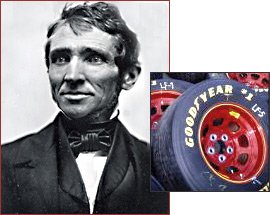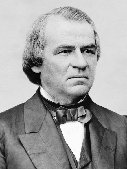Campbell Soup Company, doing business as Campbell's, is an American processed food and snack company. The company is most closely associated with its flagship canned soup products; however, through mergers and acquisitions, it has grown to become one of the largest processed food companies in the U.S. with a wide variety of products under its flagship Campbell's brand as well as other brands like Pepperidge Farm, Snyder's of Hanover, V8, and Swanson. Under its brands, Campbell's produces soups and other canned meals, baked goods, beverages, and snacks. It is headquartered in Camden, New Jersey.
The classic red-and-white can design used by many Campbell's branded products has become an American icon, and its use in pop art was typified by Andy Warhol's series of Campbell's Soup Cans prints.
The company was started in 1869 by Joseph A. Campbell,
a fruit merchant from Bridgeton, New Jersey, and Abraham Anderson, an icebox manufacturer from South Jersey. They produced canned tomatoes, vegetables, jellies, soups, condiments, and minced meats.
In 1876, Anderson left the partnership and the company became the "Joseph A. Campbell Preserve Company". Anderson's son, Campbell Speelman, split paths with his father and continued to work at Campbell's as a creative director, originally designing the Campbell's Soup Cans.
Campbell reorganized into "Joseph Campbell & Co." in 1896. In 1897, John T. Dorrance, a nephew of the general manager Arthur Dorrance, began working for the company at a wage of $7.50 a week ($253 in 2022 dollars). Dorrance, a chemist with degrees from MIT and Göttingen University, Germany, developed a commercially viable method for condensing soup by halving the quantity of its heaviest ingredient: water. He went on to become president of the company from 1914 to 1930, eventually buying out the Campbell family.
In 1898, Herberton Williams, a Campbell's executive, convinced the company to adopt a carnelian red and bright white color scheme, because he was taken by the crisp carnelian red color of the Cornell University football team's uniforms. To this day, the layout of the can, with its red and white design and the metallic bronze medal seal from the 1900 Paris Exhibition, has changed very little, with the exception of the French phrase on the top of the bronze seal that said "Exposition-Universelle-Internationale" which was changed to the English name of the exhibition as "Paris International Exposition".
To read a lot more, go here: https://en.wikipedia.org/wiki/Campbell_Soup_Company
In the 19th century, folks went crazy for mining
shiny gold nuggets all over the U.S., but the
Native Americans treasured a different kind of "gold." It was corn! With its popularity came
corn cakes, corn bread and even hot-from-the-oven corn bakes, like our Gold Rush Corn Bake.
This updated corn casserole is to-die-for.
- 3 corn muffins, crumbled
- 4 teaspoons butter, melted, divided
- 1 (12-ounce) package frozen corn, thawed
- 1 (14-1/2-ounce) can creamed corn
- 1 egg, beaten
- 1/2 teaspoon salt
- 1/4 teaspoon black pepper
- Preheat oven to 375º. Coat a 9-inch cast iron skillet or 1-1/2-quart baking dish with cooking spray.
- In a medium bowl, combine corn muffins and 2 tablespoons butter; mix well and set aside.
- In a large bowl, combine corn, creamed corn, egg, the remaining 2 tablespoons butter, salt, and pepper; mix well.
- Sprinkle one-third of corn muffin mixture in skillet. Top with half the corn mixture. Repeat layers, ending with a layer of corn muffin mixture.
- Bake 35 to 40 minutes, or until heated through and golden on top.








.jpg)













No comments:
Post a Comment